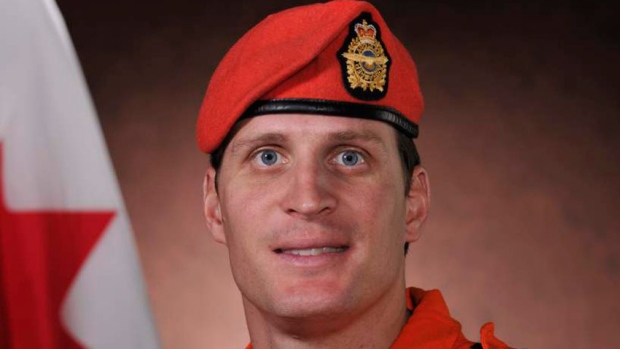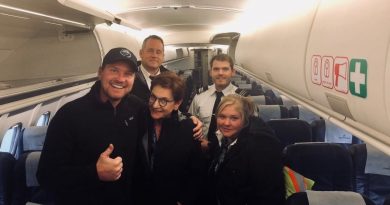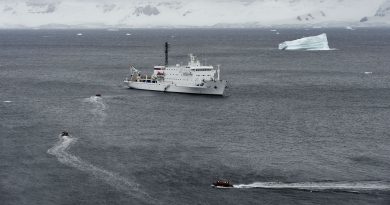Canada’s Air Force rewrites rules after rescuer’s death in Arctic

New regulations may restrict operations when risk to rescuers judged to be too high
The Royal Canadian Air Force is considering a rewrite of its rules for high-risk search-and-rescue missions following the investigation of a dramatic Arctic rescue in which one of its members died.
“Appropriate regulations would serve to restrict operations when the risk is pre-determined to be too high,” says the final report into the mission.
“They would override excessive self-reliance and would serve to temper the (search-and-rescue) motto ‘that others may live.’ The motto was not intended to promote a rescue in the face of unreasonable risks.”
Water leaked into drysuit
Sgt. Janick Gilbert, 34, drowned in an otherwise successful effort to pluck two Inuit hunters from the dark, stormy and ice-choked waters of Hecla Strait on Oct. 27, 2011.
The report says freezing water leaked into Gilbert’s drysuit after he parachuted down with two other rescuers. The report suggests he became weakened by hypothermia and was bounced out of his life raft. It drifted away from him after a tether attaching him to the boat tore loose and he was unable to swim after it and climb back in.
The report’s strongest conclusions relate to helping rescuers such as Gilbert, who was the team leader, make better plans for such missions — including how to decide when it’s simply too dangerous to jump.
“During this rescue, (Gilbert) was the expert, although he had neither previously performed a water-rescue jump of this nature nor did he have a suitable mission-specific checklist to consider,” says the report. “Both of his … colleagues had just five months experience and the aircraft captain was junior, on his first flying tour.”
“(Gilbert), without suitable experience, suitable regulatory guidance or a suitable checklist could not recognize his own limitations, the risks to the other (rescuers) and the unforeseen issues involved in conducting a rescue of this nature.”
Jump gone wrong
The rescue began when Gilbert and two others jumped from a C-130 Hercules airplane to save a pair of walrus hunters in Hecla Strait, 25 kilometres east of Igloolik.
The two stranded men — a father and son — were in a small open boat stuck in pack ice and had activated a personal locator beacon a day before the rescue aircraft flew over them.
One of the airmen was able to swim to a raft that had been dropped by the aircraft and helped the stranded hunters until they were all lifted to safety by a helicopter about four hours later.
The second airman swam until he realized he couldn’t make it to the rescue raft and deployed his own personal one-man life raft. He bailed his vessel until he was rescued by the chopper.
Gilbert landed furthest from the raft after parachuting down. He made a partial radio transmission to the plane but was found dead hours later.
Improvements to equipment and procedures
Investigators found a significant amount of water inside his clothing. One of the other rescuers had noticed Gilbert’s zipper hadn’t been done up all the way before the jump.
“Sources for water may have been the open zipper observed prior to his jump, or his neck seal, if it was not sufficiently tensioned prior to the jump,” says the report. “The exact status of the zipper and the neck seal before the jump were unknown.”
The report also recommends many improvements to equipment and procedures. It notes the decision to jump was made without a plan for how the rescuers would return to safety.
“This investigation identified gaps and deficiencies in training, equipment and operations,” the report concludes.
“Although (the) crew ultimately rescued the men in distress, the mission’s cost of one (search-and-rescuer’s) life was extreme.
“This tragic outcome emphasizes the need for dedicated training in open sea, cold water rescues and the need for highly specialized equipment, specific procedures and realistic contingency plans.”
Related Links:
Canada: Search and rescues on the rise in Canada’s eastern Arctic, CBC News
Finland: Hovercraft rescue from ice in North Finland, Yle News
United States: Steps outlined to prevent Alaska search-and-rescue tragedy, Alaska Dispatch
Russia: Russia opens first of ten new search and rescue centers in the Arctic, Blog by Mia Bennett



